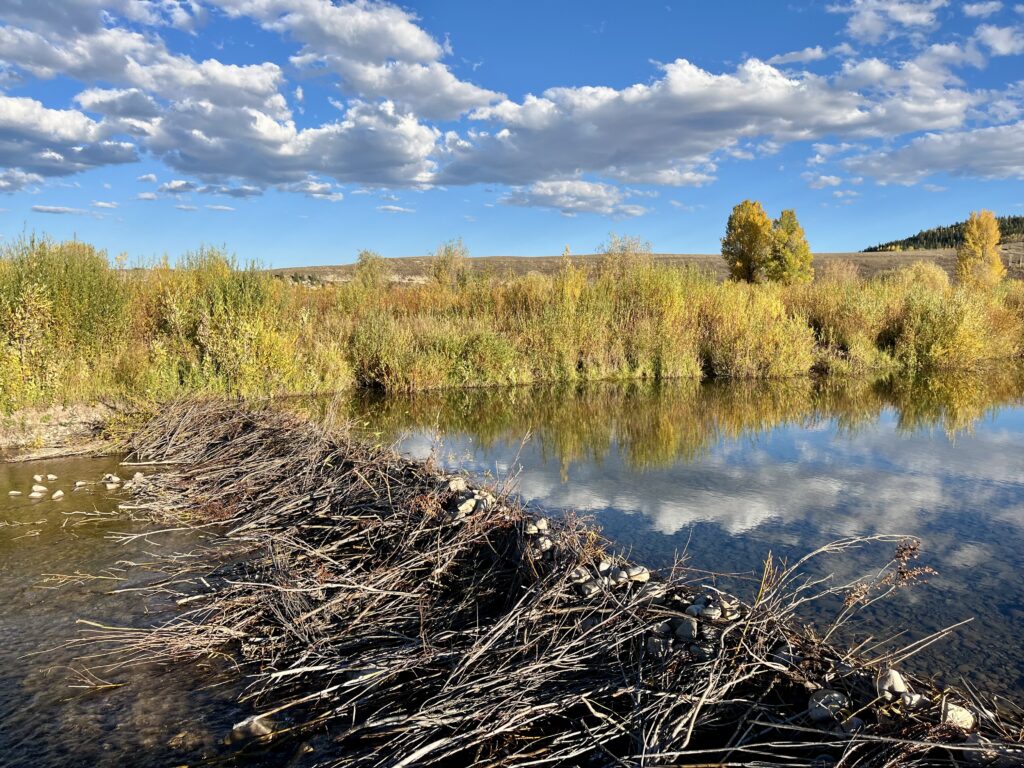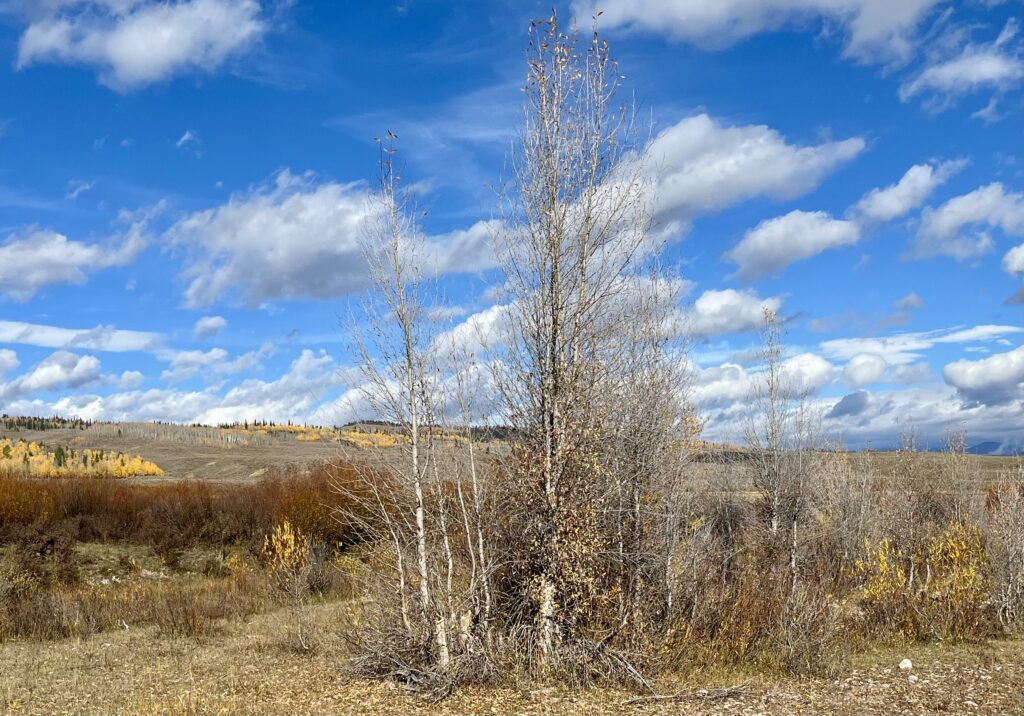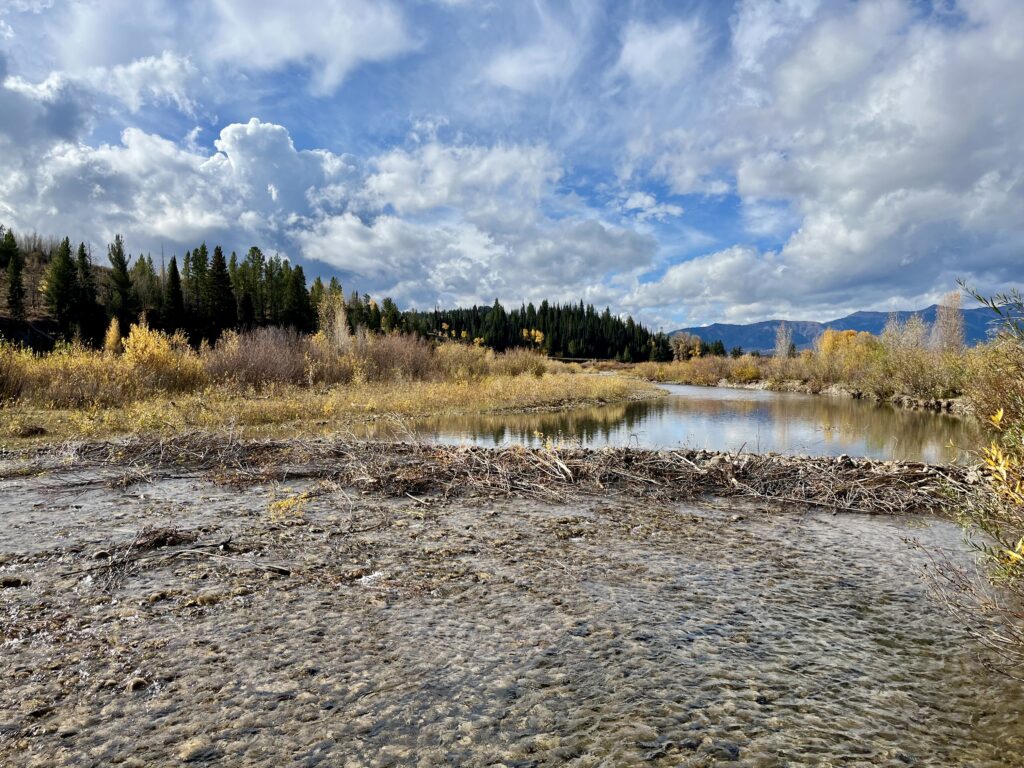
Beavers are considered ecosystem engineers. They are vulnerable to predators when on land, so they have adapted to avoid predation by building dams within streams. These dams create ponds where they can swim from their lodge to water’s edge to harvest the willow and cottonwood branches that they store in the bottom of the pond as a winter food supply. Their dams hold back water, creating wetlands that slow water movement across the landscape. This allows infiltration into the underlying soil and groundwater recharge, providing a source of water to maintain stream flow during dry periods.
While beavers are valuable for ecosystem function and maintenance, their pelts have also been found valuable in the fashion industry. Two hundred years ago western Wyoming was the epicenter of the global trade in beaver pelts. Felted beaver fur was turned into fashionable hats for European gentlemen, increasing the demand for beaver products. This led trappers to pursue beavers towards extirpation in almost every watershed in the Intermountain West. Fashions changed in the 1840s, but by then most of Wyoming’s beavers were gone. Even now, it’s believed that beaver numbers in the western USA are a fraction their historic levels. Beavers on the landscape aren’t without challenges, despite their ecological and economic value. They don’t distinguish between streams and ditches, creating conflicts with irrigators and other agricultural interests. Their constant building of dams requires a steady source of logs and branches that they procure by using their teeth to cut down trees and shrubs. This creates conflicts in areas where land managers seek to increase riparian vegetation to stabilize river channels and preserve wildlife habitat.

As fall arrives, this conflict becomes apparent locally. After a dry and warm summer, the Hoback River is very low, and the local beavers are getting ready for winter. They’re building dams across the river and use the resulting reservoirs to store the caches of Willow and cottonwood branches they will feed on during winter.

It takes a lot of branches to build these dams and stock the caches, and they take them from the surrounding riparian corridor.
We understand the ecological benefits of encouraging beavers to recolonize their historic ranges. However, we also recognize the need to protect riparian vegetation required by other wildlife to survive as well as the need for irrigation management. Ricketts Conservation Foundation is excited to explore solutions that will encourage a balanced approach to this complex natural resource issue in 2026.